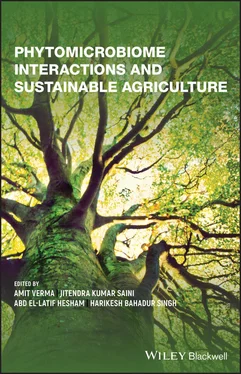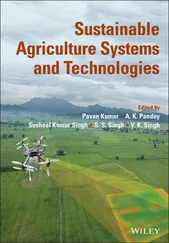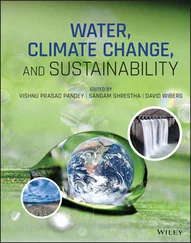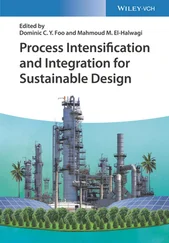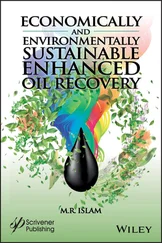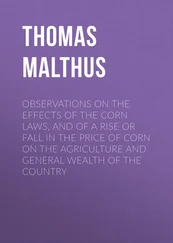In the environment, plants are exposed to all kinds of friendly and unfriendly microbes with several stresses in the ground. Plant secretion called root exudate has a lot of potential from the perspective of defense. Root exudates possess antimicrobial chemicals, such as phytoanticipins, diterpene rhizathalene A, phytoalexins, phenylpropanoids, t‐cinnamic acids, momilacton A, rosmarinic acids, terpenoids, benzoxazinoids, and the defense signaling molecules, salicylic acid, nitric oxide, and methyl jasmonate, which assist in the defense mechanisms of the plant. In addition, these chemical phenolics and terpenoids act as an antimicrobial apart from defense root exudates, which support the stress condition of plants due to their primary and secondary metabolite present in root exudates ( Table 1.2).
Plant root exudation indirectly controls resource competition by altering soil chemistry, soil process, and microbial populations, and thus has an important function in plant development. Root exudation possesses the capacity to alter the soil nutrient availability by changing the soil property in the aspect of its chemistry and biology. Root exudate releases mucilaginous substance from root tip of the plant and is a part of exudation quite essential to maintain the water potential (Susan 2018). Root exudate releases plant carbon compounds (border cells and exudates) and primary metabolites into the rhizospheric soil (Canarini et al. 2019). It is important to understand root‐mediated communication between plants and other organisms, which assists in the enhancement of agricultural production and can be useful in reduction in the demand for chemical fertilizer, such as in legume plants.
Today's main concern of agriculture is the quality of productivity in order to feed the world population. For more production and protection of crops, farmers use chemicals that directly or indirectly effects the fertility of the soil as well as the consumers of the crop. To alleviate the chemical inputs in the agriculture requires detailed information about root exudation and its influence on plant development through soil condition modulation in terms of both biotic as well as abiotic components. Production of the crop depends on plant genotype and soil ecosystem. Root exudate is the key factor in the rhizospheric interaction due to nutrient assets. Researchers should emphasize root exudates, through profiling and their impact on microbes and soil in the rhizosphere for more exploration of root exudate. Still there are several unexplored chemicals of root exudates that can create magnificent changes in the soil and plants in terms of fertility, defense, growth, and yield. A few relevant and essential components of root exudates can be used for developing variety through genetic engineering and breeding, which assists in a sustainable agriculture system. Several chemical inducers should be explored, which increases the quantity of root exudates for better performance of the rhizosphere. In conclusional, in revealing root exudation secrets, we can support economical agricultural productivity through achievement of environmental sustainability.
| S. No. |
Root exudate component(s) |
Plant system under study |
Mechanism |
References |
| 1 |
Terpenoid class of compound: strigolactone |
— |
Recruitment of fungal species and establishment of Arbuscular mycorrhiza |
Parniske (2008) |
| 2 |
The isoflavones like daidzein, genistein, and coumestrol |
Tribe Phaseoleae plants |
Induces the nod gene expression in their rhizobial partners |
Dakora (2000) |
| 3 |
Sugars, sugar acids, amino acids and organic acids |
Maize root |
Effect of exudate components on the chemosensory systems of Pseudomonas putida KT2440 |
Lopez‐Farfan et al. (2019) |
| 4 |
A class of indole‐derived plant chemical, benzoxazinoids |
Cereal crops |
Antifeedant, insecticidal, antimicrobial, and allelopathic activities are related with this exudate component |
Wouters et al. (2016) |
| 5 |
A phenolic compound luteolin |
‐‐ |
Acts as a potent and specific inducer of nodABC gene expression in Rhizobium meliloti . |
Caetano‐Anolles et al. (1988) |
| 6 |
Catechol and flavonoids catechin, and quercetin |
Maize ( Zea mays L.) |
Silicon‐induced amelioration of aluminum toxicity |
Kidd et al. (2001) |
| 7 |
Benzoxazinoids, secondary metabolites in grasses |
Maize ( Zea mays L.) |
Effects the interaction between maize and Pseudomonas putida KT2440. |
Neal et al. (2012) |
| 8 |
Cyclic hydroxamates |
Maize ( Zea mays L.) |
Mediate aluminum toxicity resistance in plant |
Poschenrieder et al. (2005) |
| 9 |
Benzoxazinoids, secondary metabolites in grasses |
Maize ( Zea mays L.) |
Regulator of innate immunity against aphids and fungi |
Ahmad et al. (2005) |
| 10 |
Carotenoid‐derived strigolactones |
Pea & Arabidopsis |
Involved in inhibition of shoot branching in plants |
Gomez‐Roldan et al. (2008) |
| 11 |
Soyasaponins |
Soybean ( Glycine max ) |
Regulates communication with beneficial microorganisms in soil |
Tsuno et al. (2018) |
| 12 |
Phytoestrogens |
Clover legume |
Male‐biased sex ratios and accelerates male metamorphic timing in wood frogs |
Lambert (2015) |
| 13 |
Phenol glycoside: rutin |
Eucalyptus globulus ssp. bicostata r |
Regulate orientation of hyphal elongation toward the root tip, thereby favoring mycorrhizal infection |
Lagrange et al. (2001) |
| 14 |
Artificial root exudate having glucose, organic acids, and serine |
— |
These components of root exudate accelerate the degradation of pyrene in soil, especially glucose |
Lu et al. (2017) |
| 15 |
Organic acids |
Legumes Lotus corniculatus L. and Trifoliumarvense L. and the grass Calamagrostis epigeios (L.) |
Influence of these exudation components on plant nutrient acquisition |
Boldt‐Burisch et al. (2019) |
| 16 |
Root exudate components: proline and phytohormones |
Citrus plants |
Alleviation of abiotic stress conditions. |
Vives‐Peris et al. (2017) |
| 17 |
Root exudate components: proline and salicylates |
Citrus plants |
Recruitment of rhizobacteria and alleviation of abiotic stress conditions. |
Vives‐Peris et al. (2018) |
| 18 |
1‐alanine, 1‐proline and oxalic acid of root exudate |
Sedum alfredii |
Phytoremediation of lead contaminated soils |
Luo et al. (2017) |
| 19 |
Organic acids like malic, lactic, acetic, succinic, citric, and maleic acids in root exudates |
Corn hybrids ( Zea mays L.) |
These exudate components might contribute to drought tolerance in corn hybrids |
Song et al. (2012) |
| 20 |
Organic acid exudates |
White spruce ( Picea glauca ) and subalpine Fir ( Abieslasiocarpa ) |
Significant role of exudate organic acids in the transformation of mica and chlorite into smectite in rhizospheric soils |
Tuason and Arocena (2009) |
| 21 |
Root exudate metabolome: primary and secondary metabolites |
Quercus ilex (holm oak) |
Exudate components were changed irreversibly by the lack of water under extreme drought conditions |
Gargallo‐Garriga et al. (2018) |
| 22 |
Seed exudate: carbon and nitrogen contents |
Chia ( Salvia hispanica ) |
Plant exudates greatly affect the physical behavior of soil |
Oleghe et al. (2017) |
| 23 |
Exudate components like total free amino acids, proline, potassium, and some phytohormones |
Barley ( Hordeum vulgare L.) |
Root exudate is an important factor in the context of crop performance and carbon balance under conditions of climate change |
Olga et al. (2017) |
| 24 |
Sakuranetin and sorgoleone of root exudate |
Sorghum ( Sorghum bicolor L.) |
Biological nitrification inhibition activity |
Subbarao et al. (2013) |
| 25 |
1,9‐decanediol |
Rice ( Oryza sativa ) |
Blocks the ammonia monooxygenase pathway of ammonia oxidation and effects nitrogen use efficiency |
Sun et al. (2016) |
